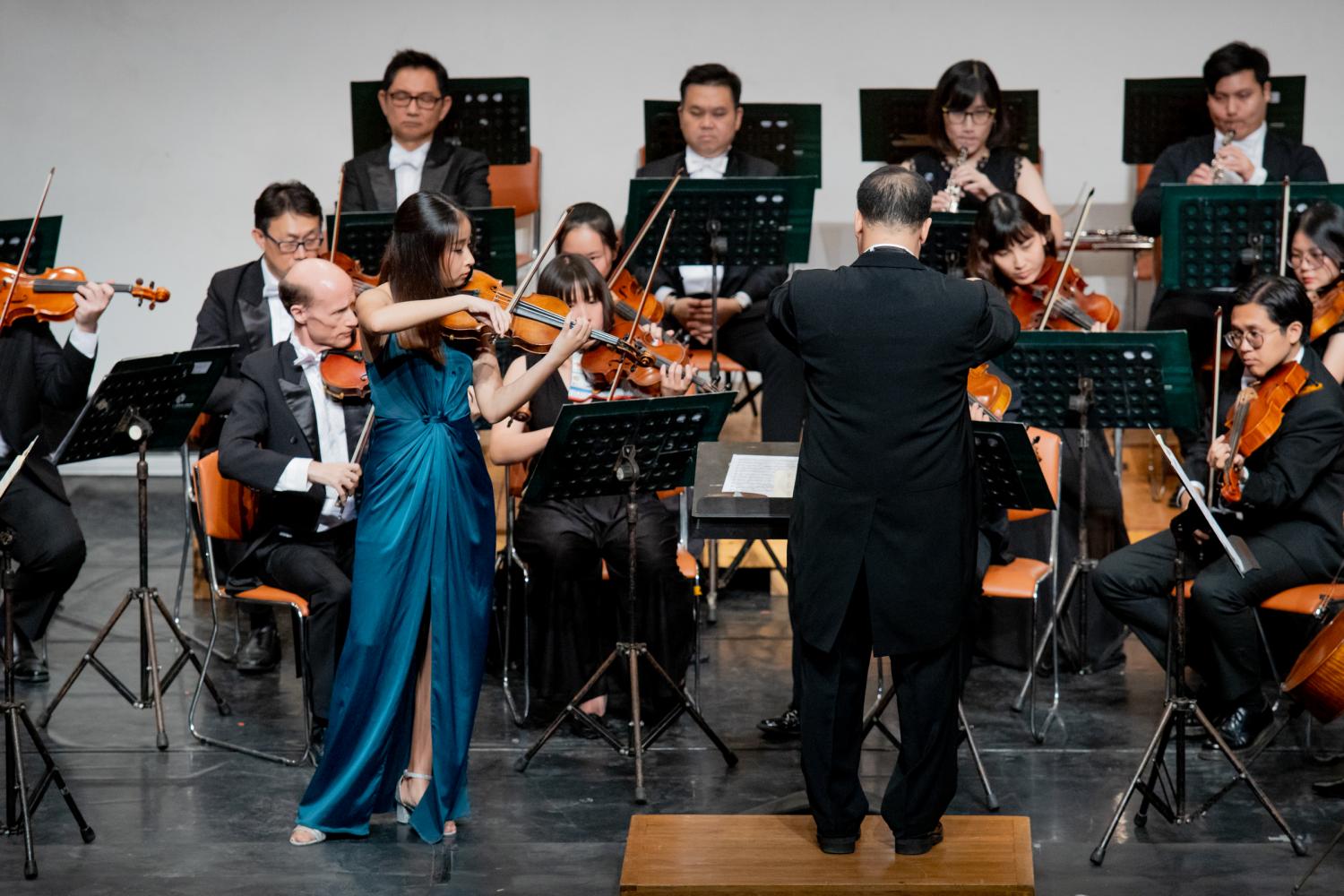Annett Sosothikul Ho, winner of the second annual RBSO Violin Competition 2019, was presented to the public last Wednesday in a most commendable concerto debut performance with the Royal Bangkok Symphony Orchestra.
An extremely welcome addition to Bangkok's increasingly thriving classical musical scene, this competition has already attracted much youthful talent of an extremely impressive calibre in its first two years. The Thai-Taiwanese violinist performed Mozart's Violin Concerto No.3 In G Major for a highly expectant audience in the Small Hall of the Thailand Cultural Centre, winning them over with her polished technique, excellent intonation and rounded musicianship.
After a tidy orchestral introduction, Annett Sosothikul Ho entered confidently with a clean and crisp tone, evidently playing on a superior instrument that projected powerfully into all corners of the auditorium, its large tone carrying easily over the orchestra. Although Mozart wrote his most important violin concertos during a problematic period as Konzertmeister at the Salzburg court in 1775, they nevertheless absolutely retain that courtly grace that characterised this particular phase of his career. This evening the whole ensemble recreated the sense of that sophisticated and ordered world very convincingly, with sensible tempos well judged by conductor Vanich Potavanich, allowing the soloist the temporal space required to deliver tastefully moulded phrasing.
It should always be remembered that before Mozart had fully established his international reputation as a prominent composer, he was regarded as one of the very best keyboard players and very finest violinists in Europe -- an incredible dual achievement. For example, when invited to dine with the abbot of Holy Cross monastery, he played at suppertime his G Major Violin Concerto, known as the Strassburger because of the allusion to a well-known folk-song of that name. In a jubilant letter to his father back home, Mozart wrote: "It went like oil! All praised the lovely pure tone."
And is it exactly this quality of apparent effortlessness and smoothness of delivery that must be achieved for a successful performance of this charming repertoire, lest Mozart's transparent textures and frequent coloratura-style writing suffer from signs of fatigue or over-exertion. Mozart kept pet birds at various stages of his life, and one can often liken his soprano-oriented melodic writing to the joyful, uninhibited and naturally unfolding vibrant sound of birdsong.
Sosothikul Ho continued her melos accordingly with a mellifluous fluidity, until she arrived at the substantial cadenza of this allegro. Here she displayed an admirable double-stopping technique (especially well-tuned thirds), coupled with a true performer's instinct for dramatic expression -- for example in sequences of diminished seventh chords.
The adagio began with some rather unfocused tutti quaver ensemble, but thereafter the warm-hearted, serene second movement adagio theme sang out in the manner of an exquisite arioso. The soloist was once again sweet sounding, albeit utilising a rather singular, narrow and uniformly fast vibrato. Altogether a beautifully blended and shaped movement, nonetheless, with muted upper strings and pizzicato celli/bass creating a ravishingly soft bed of sound.
The Rondeau finale finds Mozart in playful, mischievous mode, the 3/8-time dance allowing for an element of (controlled) rustic fervour. Soloist and orchestra once again partnered here in a tight ensemble, filled with echoes of German/Austrian folk-song, until the slower, delightful G-minor and Hungarian episodes towards the conclusion afforded moments of mild "sturm-und-drang" and open-string-drone musette-like fun respectively.
This most enjoyable evening began with a neat and disciplined rendition of Bartók's own orchestral arrangement of his infectious Romanian Folk Dances (originally for solo piano). Potavanich paced the six captivating movements well, with notable contributions from Worapon Kanweerayothin (haunting piccolo solo in Pe Loc) and concertmaster Bing Han (expressive violin solo in Buciumeana, sourced by the composer from a gypsy fiddle player he had encountered). Meanwhile, the sheer adrenalin generated by the last movement, Maruntel, had the whole RBSO caught up in a whirling frenzy of excitement -- most impressive!
Schubert's effervescent Symphony No.5 In B-flat Major, written when he was 19, was interpreted tastefully after the intermission. The composer's trademark freshness, vitality and geniality provided a thoroughly uplifting end to this concert. A brisk opening allegro radiated youthful optimism, the delicate balancing of themes played with a pleasing lightness of touch. An otherwise charming andante con moto suffered just one unfortunate moment of tonal confusion in the first violins. An E-flat minor harmony featured a solitary, alien G natural -- most unwelcome and unsettling in this context.
Meanwhile the two oboes sat nicely atop the texture, featuring very cool-headed breath control, allowing Schubert's lovely, long-held hovering pedal notes and resolutions to sail over, and indeed transcend, the bar-lines.
The G-minor allegro molto third movement always reminds of Mozart's Symphony No.40, its trio rather more Beethovenian as it evokes the contentment of a spring morning. As indeed does the happy, tripping finale, which brought this most enjoyable concert to its joyous close.

